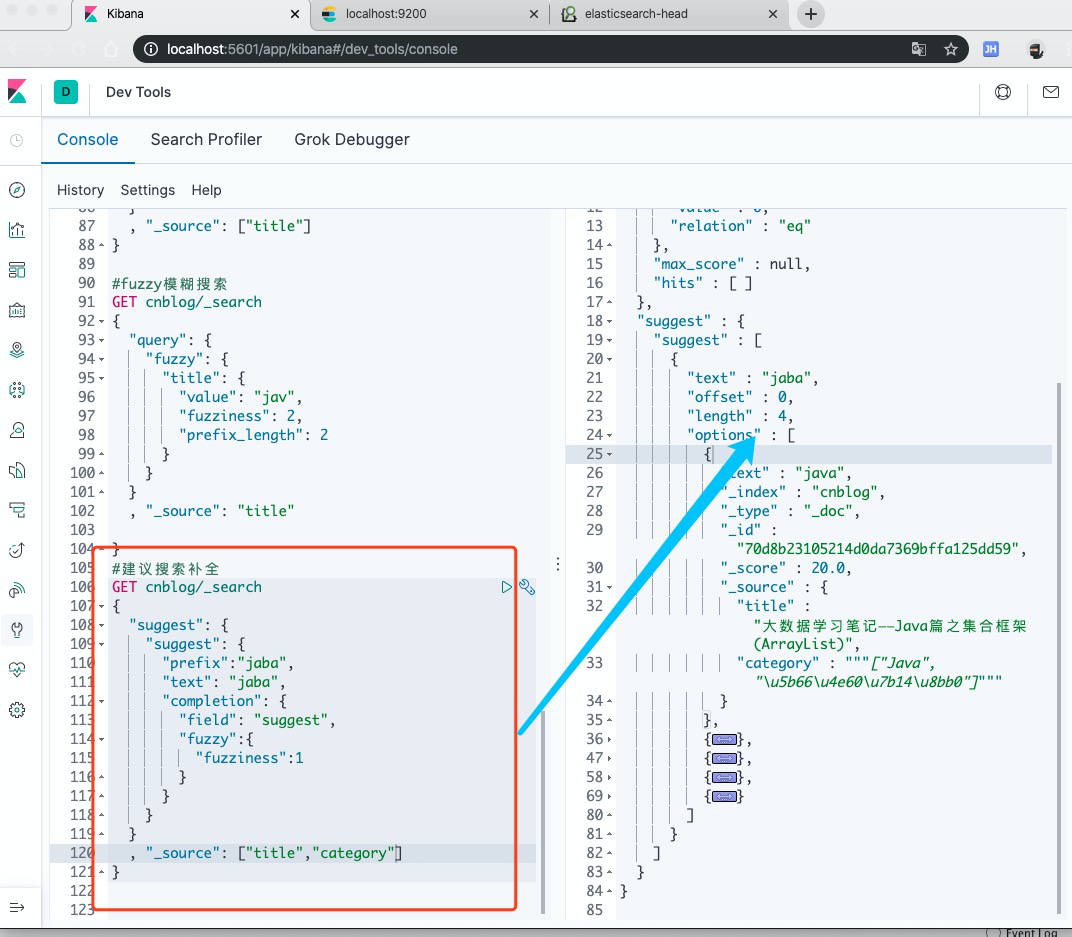

- #Elasticsearch completion suggester analyzer install#
- #Elasticsearch completion suggester analyzer full#
Typeahead search, also known as autosuggest or autocomplete feature, is a way of filtering out the data by checking if the user input data is a subset of the data. These provide a better search experience and features like typeahead, fuzzy search, boosting the search results based on relevancy, similarity search, etc. There are many search engines available in the market today like Elasticsearch, Apache Solr, Azure Cognitive Search, etc. This requires us to design and implement a search engine along with your golden source (RDBMS/NOSQL). The idea is to extract all the words we have already indexed in the app index.Today, search is an important functionality in enterprise applications and end-users are obsessed with the experience of Google Search and expecting the application search also provides similar experiences. As there is no model mapped to this index, we won't create a provider but a command. As this point, we now have two indexes in the Elasticsearch cluster: If we launch the populate command, the new index is created. We can see that we have added a context to the suggest field and it's associated with the locale property ( path: locale). And we have a second property locale that will allow us to filter the suggestions depending on the current locale (en or fr). We need this particular type to be able to use the completion suggester as we will see in the next chapter. In the mapping, we have two properties: first, the suggest of the completion types.

Then, in the "type" section, we also use an alias as the main app index. For example, if we type: "element", the "élément" word should be suggested. This asciifolding filter will allow us to ignore french accents to make the match even accents are not used in the input. Some explanations about the new index and its mapping: before declaring the new type, I add a custom analyser in the setting section. # L1->L29 snippet in templates/blog/posts/_48.html.twig Service: App\Elasticsearch\Provider\ArticleProvider

#Elasticsearch completion suggester analyzer install#
# Run "composer require symfony/mercure-bundle" to install and configure the Mercure integration MERCURE_URL: $ĬontentEn: ~ # The default boost value is 1 "9309:9300" # Important if you have multiple es instances running Image: /elasticsearch/elasticsearch:6.8.18 # - Elasticsearch -Ĭontainer_name: strangebuzz-elasticsearch-1 # Snippet L20+4 in templates/snippet/code/_ # Database -Ĭommand: -default-authentication-plugin=mysql_native_password
#Elasticsearch completion suggester analyzer full#
elasticsearch Click here to view the new full docker-compose.yaml file. Let's add the following entry to the docker-compose.yaml file: Of course, it will allow us to do all the essential maintenance tasks we used to with head: delete, close an index, create, delete an alias, check a document, verify the index mappings and much more! The list of what you can do with it is impressive (check out at the left menu of the next screenshot). Kibana is an open-source data visualization plugin for Elasticsearch. So, let's add Kibana to our Docker setup. But this development tool is quite old and not maintained anymore. Until now, we used the "head" plugin to manage our cluster. It is, of course, recommended to read them (links above) before continuing with this one.įirst, we will try to improve our Elasticsearch stack. The prerequisites are the same as the first two parts. Part 3: Adding Kibana to the stack, implementing an auto-complete with Elasticsearch.Part 2: Cleanup and refactoring, using an Elasticsearch alias, creating a custom provider, tuning the search relevance and adding the pagination.Part 1: Setting the Elasticsearch stack, installing FOSElastica, indexing data, searching and displaying results.This post is the third and last part of the tutorial "Implementing a search engine with Elasticsearch and Symfony": » Published in "A week of Symfony 672" (10-17 November 2019).


 0 kommentar(er)
0 kommentar(er)
